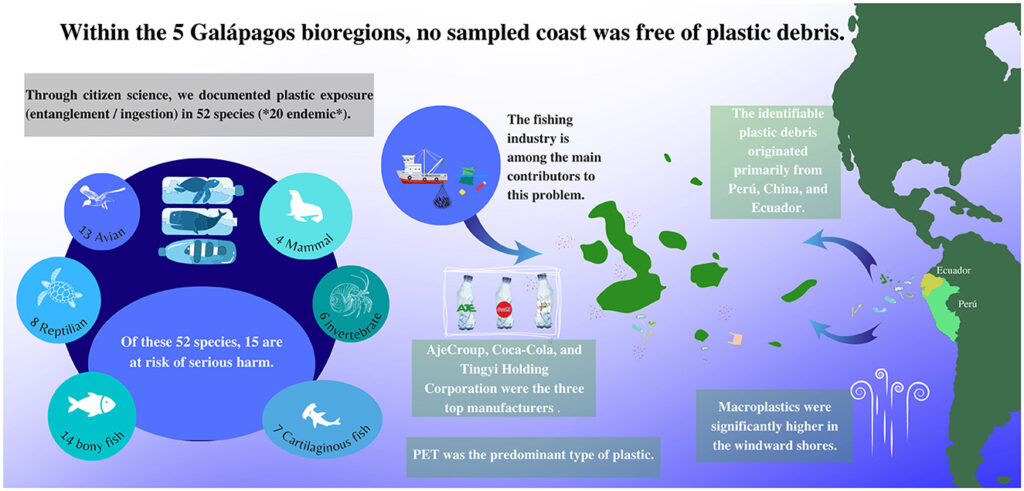Graphical Abstract. The main findings of this study are presented visually, showing how many and which species of animals are most at risk, the main countries of manufacturing and manufacturers that were predominant, and the direction of pollution.
Plastic pollution (PP) is an ongoing, pervasive global problem that represents a risk to the Galápagos archipelago, despite it being one of the world’s most pristine and well-protected regions. By working closely with citizen scientists, we aimed to quantify and map the magnitude and biological effects of PP. With macroplastic abundance ranging from 0.003 to 2.87 items/m2, our research indicates that all five sampled Galápagos bioregions are contaminated with PP along their coastlines. The distribution of this debris is not uniform, with macroplastics significantly higher on the windward shores. Based on the identification information found on the examined items, Polyethylene terephthalate (PET) was the most predominant type of plastic originating from both consumer and fisheries-based products deriving primarily from Perú, China, and Ecuador. The top three manufacturers were AjeCroup, Coca-Cola, and Tingy Holding Corporation. Through citizen science, we documented PP exposure in 52 species (20 endemic) in Galápagos terrestrial and marine environments, with exposure occurring in two ways: entanglement and ingestion. These included reptiles (8 species), birds (13 species), mammals (4 species), cartilaginous fish (7 species), bony fish (14 species), and invertebrates (6 species). The top five species with the greatest risk of serious harm due to entanglement (in decreasing order) were identified as green sea turtles, marine iguanas, whale sharks, spine-tail mobulas, and medium-ground finches. In contrast, Santa Cruz tortoises, green sea turtles, marine iguanas, black-striped salemas, and Galápagos sea lions were at the highest risk of harm due to the ingestion of plastics. Our research indicates that PP is a growing problem in the Galápagos archipelago and that additional work is necessary to mitigate its impact now and in the future.
Read the article in the link: https://www.frontiersin.org/articles/10.3389/frsus.2023.1091516/full






